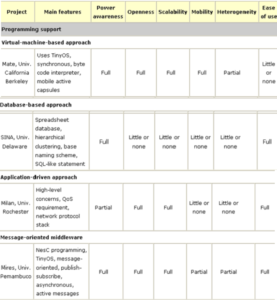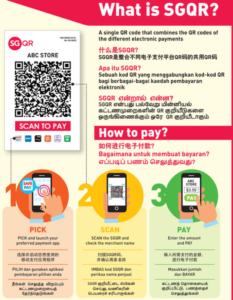Smart Nation Programme initiated in 2014 in the Prime Minister’s office as a coordinating office.
One of the very first projects was called Lab on Wheels 1 , where a roving bus was transformed to
introduce technological exploration such as cyber security, AI interaction, and VR media. There
have been numerous projects since then and start-up companies are continuously investing in
Singapore. Smart Nation Programme aims to increase the quality of life by transforming all
domains in a social structure – health, transport, urbanisation, finance, and education. This
would be done by supporting the development of digitalisation. Some of the main projects for
this programme are CODEX, Smart Sensor/Urban Mobility, and E-Payments.
CODEX stands for Core Operations Development Environment and eXchange and it is the digital
platform that will make it easier for the government to provide services to its citizens with lower
cost. It consists of a specific data architecture that enables better data sharing between
agencies, a systematic shift from the government to private sectors for better digital services,
and a Singapore Government Technology Stack (SGTS) to create efficient digital applications.
Benefits that come with CODEX are:
– Recyclable digital components that agencies can utilise at any time to provide products
to the public. These components can be machine readable data flows, middleware, and
micro-services. Middleware is a software that acts as a connecting system between a
database and applications. A typical example of it is an automated backup system or
transaction monitor.
– Utilisation of common tools that will reduce existing bugs and errors and increase
security.
– Accessibility to commercial cloud that will allow public and private sectors to collaborate
to develop more user-friendly services.
Smart Sensor Platform provides improved municipal services, city operation, planning and
surveillance. The systematic use of sensors offers more responsive and reliable public transport.
Wireless Sensor Network will be used to analyse data for water usage from smart meters. These
smart meters encourage users to conserve their water usage as they show real-time water
management data through a mobile app. Also, these meters detect leaks. This network also
supports drowning detection at pools, personal alert button, and smart lamp posts.
Sensor networks come with diverse availability of data and application quality of service
requirements 2 . Incorporation of middleware is often essential to connect such services and
information to the users. Middleware should provide low-level programming models to meet
the major challenge of bridging the hardware technology’s raw potential and the necessary
broad activities such as reconfiguration, execution, and communication 3 . Sensor networks come
with various advantages that traditional networks do not have: high-resolution data, adaptive
mechanisms, and so on. They are however, integrated in much more complex ways and are
prone to impediments. Middleware can face the challenges caused by wireless sensor networks.
Middleware should support the network’s operation as it grows without affecting the
performance. In other words, it should support the network’s scalability. Middleware should
also provide real-time services as sensor networks are often kept in real-time.
Examples of middleware are Mate, SINA, Milan, and Mires. Mate is virtual-machine based and it
supports scalability by using direct messages to update the network code. It is small and very
resilient to failures. However, it can only be used in low-duty cycle, and not in complex
applications. SINA is a database-based and it is easy to configure. It provides energy savings and
mobility, making it easy to access sensor data. A drawback is that it keeps a fixed global-network
structure, therefore it does not work for highly dynamic applications. Milan is application-
driven-based and it supports scalability very well. It is user-friendly and it focuses on extending
the application’s runtime rather than on the actual sensor power usage. A downside is it is not
the most suitable middleware for supporting operating systems and hardware heterogeneity.
Heterogeneity refers to using more than one kind of cores. Lastly, unlike Milan, Mires supports
hardware heterogeneity. It is message-oriented and easy to use but has little support for
scalability and mobility. Its overall performance on the network is not as elaborated as other
kinds of middleware. Figure 1 shows a table of lists of sensor network middleware and their
features.

Figure 1 – Approaches to sensor network middleware 3 .
E-Payments Project was launched to provide a transparent, convenient, and multi-utility
payment infrastructure to citizens and organisations. Incorporation of blockchains and algorithm
makes the system secure and trustworthy. This project would increase the efficiency and quality
of services between citizens and businesses. In 2014, the banking industry launched FAST (Fast
and Secure Transfers) to facilitate real-time transfers between customers and businesses across
various banks. In 2017, PayNow was launched that enabled instant transfers between the
customers of participating banks with only their mobile numbers. This incentivized government
agencies to use it. For example, the Central Provident Fund (CPF) and Ministry of Education
(MOE) used it to expend lump sum and award monies. Other organisations also adopted
PayNow: SportSG disbursed the Singapore Games Awards and NSMen can now receive their
IPPT awards on the same day. Citizens with their NRIC registered on PayNow receive their
Singapore Bonus 10 days earlier as well. In 2018, NETS, a financial services company developed
an e-payment system for 200 coffee shops, 25 marketplaces, and 20 industrial canteens. The
continual employment of e-payment systems is making financial interactions more convenient
by the day. During the same year, the Singapore government released a QR code that combines
multiple payment QR codes into a single QR code called Singapore Quick Response Code (SGQR)
standard. Vendors only need one QR code and when the user scans it, the user chooses from
which payment app he or she wants to pay with. Figure 2 shows information on SGQR.
An empirical study regarding customers’ perceptions of security and trust in e-payment systems
was performed by Kim et al. 4 . Although this study was not based in Singapore, since South
Korea’s electronic commerce market size is huge and the development of IT related to e-
payment systems has been exhaustively pursued 5 , it is safe to claim that the Korean public’s
viewpoint may contribute a lot of weight in the significance of this topic. The cultural differences
between the two places may result in a different opinion as well.
The study showed that there was no correlation between the quality of transaction procedures
and consumers’ perceived security or trust in e-payment system use. This may be due to the fact
that the study was done a decade ago when such system was not as developed as now,
therefore technical bugs were expected to occur. However, once the consumers experienced

Figure 2 – SGQR code information.
complex procedures, the inconvenience level increased, which reduced the perceived trust
level. The study suggested that e-payment providers should alleviate concerns of consumers
and promote their beliefs at the same time. This can be done by concentrating on technical
protections and security statements while keeping their promotion simple to understand to
minimise inconvenience. The viewpoint of Singaporeans may differ to that of Koreans in this
study as E-Payments Project is a contemporary project with more developed technology and an
emphasis on convenience.
Reference
1 Imda.gov.sg. (2019). IMTalent | IMDA Lab on Wheels. [online] Available at:
https://www.imda.gov.sg/imtalent/programmes/lab-on-wheels.
2 Heinzelman, W.B., Murphy, A.L., Carvalho, H.S. and Perillo, M.A., 2004. Middleware to support
sensor network applications. IEEE network, 18(1), pp.6-14.
3 Hadim, S. and Mohamed, N. (2006). Middleware: Middleware Challenges and Approaches for
Wireless Sensor Networks. IEEE Distributed Systems Online, 7(3), pp.1-1.
4 Kim, C., Tao, W., Shin, N. and Kim, K. (2010). An empirical study of customers’ perceptions of
security and trust in e-payment systems. Electronic Commerce Research and Applications, 9(1),
pp.84-95.
5 Au, Y. and Kauffman, R. (2008). The economics of mobile payments: Understanding stakeholder
issues for an emerging financial technology application. Electronic Commerce Research and
Applications, 7(2), pp.141-164.
